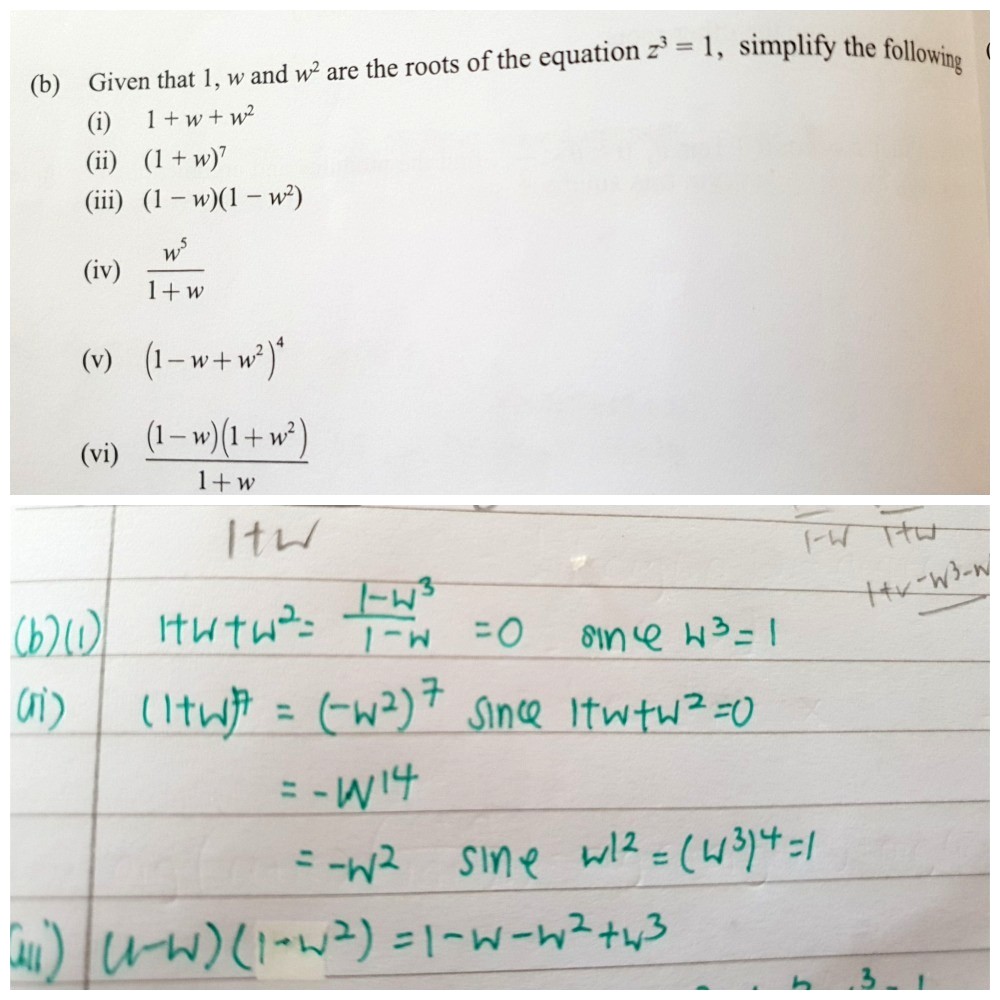Ask Singapore Homework?
Upload a photo of a Singapore homework and someone will email you the solution for free.

Question
junior college 2 | H2 Maths
One Answer Below
Anyone can contribute an answer, even non-tutors.

Need help with just part i, i dont understand the working given by the ans sheet, thank u for ur help!
So 1 - w3 = (1 - w) (1 + w + w2) which rearranges to become 1 + w + w2 = (1 - w3) / (1 - w).
Since z = w is one of the roots of the equation z3 = 1, it follows that z3 = w3 = 1.
But recall that 1, w and w2 are the roots of the equation z3 = 1. Since 1 is already taken, w cannot equal 1 and must be a complex number. But in any case, w3 still equals 1 as explained in the previous paragraph.
Therefore, (1 - w3) / (1 - w) = 0 / non-zero = 0.
z³ - 1 = z³ - 1³ = (z - 1)(z² + z + 1) = 0
We know that there is only 1 real root, z = 1. So w and w² are complex roots.
When you sub z = w,
(w - 1)(w² + w + 1) = 0
Since w is complex, it has an imaginary portion as well.. So w - 1 ≠ 0 in all cases.
So w² + w + 1 has to = 0
In case you're wondering why there is w and w²,
z³ - 1 = z³ - 1³ = (z - 1)(z² + z + 1) = 0
z = 1 or z² + z + 1 = 0
z = 1 or z = [-1 ±√(1² - 4(1)(1) ) ] / (2(1))
z = -½ ± √(-3) / 2
z = -½ ± ½i√3
(-½ - ½i√3)²
= (-½)² - 2(-½)(½i√3) + (½i√3)²
= ¼ + ½i√3 - ¾
= - ½ + ½i√3
It also works the other way.
If you let one be w, the other is w².
See 1 Answer






